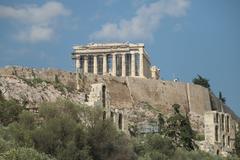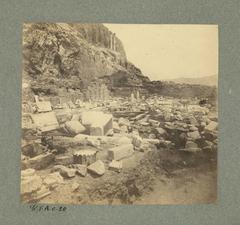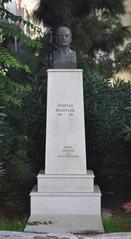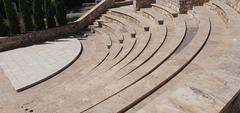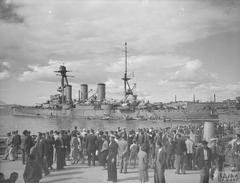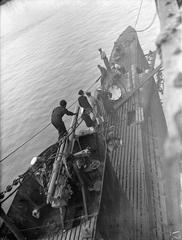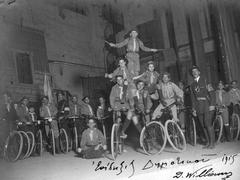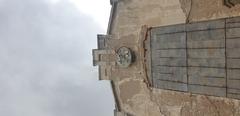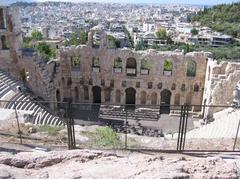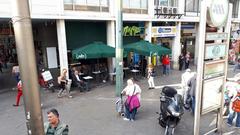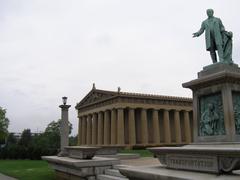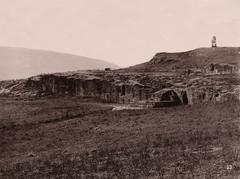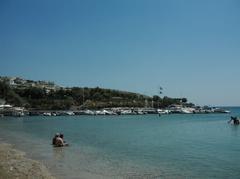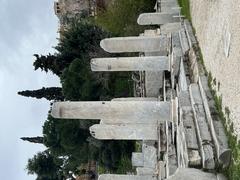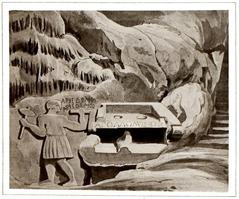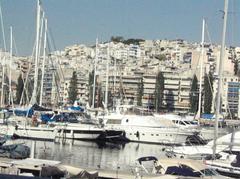
Comprehensive Guide to Visiting Piraiki, Piraeus, Greece
Date: 18/08/2024
Introduction
Piraiki in Piraeus, Greece, is a fascinating destination where history and modernity harmoniously coexist, offering visitors a rich tapestry of cultural experiences. This comprehensive guide aims to provide essential information about visiting hours, ticket prices, historical context, and travel tips for Piraiki, ensuring your journey is both informative and enjoyable. Piraeus, often referred to as the gateway to the Greek islands, has a history that stretches back to ancient times and continues to thrive as a bustling port city today. The strategic significance of Piraeus was recognized as early as the 26th century BC, and it has since played a pivotal role in Greece’s naval and commercial activities. From the ancient walls of Piraiki to the vibrant local festivals, this guide will help you navigate through the historical and cultural landmarks that make Piraiki a must-visit destination (Wikipedia, Travel Greece, World History, Over Your Place).
Table of Contents
- Introduction
- Historical Context
- Cultural Significance
- Visitor Information
- Special Features
- FAQ
- Conclusion
Historical Context
Ancient Beginnings
Piraiki, located in Piraeus, Greece, has a rich history dating back to ancient times, initially inhabited as early as the 26th century BC (Wikipedia). During prehistoric times, Piraeus was an island connected to the mainland by a low-lying stretch of land, often flooded by seawater. This land bridge, known as the Halipedon or ‘salt field,’ was used as a salt field whenever it dried up. Over time, the area became increasingly silted, high, and dry, making the land passage safely crossable by early classical times.
Classical Greece
The strategic importance of Piraiki was recognized by the sagacious leaders of ancient Greece. Themistocles, a prominent Athenian statesman, relocated Athens’ port from Phaleron to Piraeus, fortifying it for naval endeavors (Travel Greece). The construction of the Long Walls, completed during Pericles’ era in 456 BC, connected Athens to Piraeus, ensuring the safe passage of goods and people between the two cities. During the classical period, Piraeus became a thriving settlement and the most important port and naval base in the Greek world, boasting 372 trireme shipsheds (World History).
Decline and Revival
Beginning in the 3rd century BC, Piraeus experienced a period of cumulative decline. However, it began to grow once again in the 19th century after Athens was made the capital of Greece. The completion of the Athens-Piraeus Railway in 1869 and the creation of the Corinth Canal in 1893 further contributed to the city’s development (Wikipedia). Today, Piraeus is a bustling city and an integral part of Athens, home to Greece’s largest harbor and a significant marine and commercial-industrial center.
Byzantine and Ottoman Periods
During the Byzantine period, Piraeus’ importance declined, but it continued to be inhabited. Under Ottoman rule, the city transformed into a small fishing village known as Porto Leone. The Venetians captured it in the 17th century, adding their own influence to the city’s culture and architecture (Over Your Place). By the 19th century, Piraeus began to develop into the significant port city we see today, especially after Greek independence.
Modern Era
The modern port of Piraeus has been rebuilt since the bombings of World War II. It is the largest port in Greece and the center of all sea communication between Athens and the Greek islands (Britannica). The city has grown considerably since World War II, with many new factories on its outskirts, mainly for the engineering and chemical industries, as well as shipyards. Piraeus is also home to a naval academy and an archaeological museum, with statuary and pottery from both the Greek and Roman periods.
Cultural Significance
Maritime Traditions
Piraeus’ identity is deeply intertwined with the sea. The locals have long been involved in maritime professions, from fishing to shipbuilding. The nautical theme is prevalent in local festivals, folklore, and daily life, evidenced by the numerous boat-themed decorations and the vigorous harbor activity (Over Your Place).
Religious Practices
Greek Orthodoxy plays a considerable role in the cultural life of Piraeus. Churches like the Holy Trinity Church and the Church of Saint Nicholas are central to many religious and community activities. Local holidays, such as Easter, are celebrated with fervor, featuring midnight masses, fireworks, and traditional feasts (Over Your Place).
Festivals and Events
One of the most vibrant festivals in Piraeus is the Carnival, held in the weeks leading up to Lent. The streets come alive with parades, colorful costumes, and music. The central celebration takes place near the port, creating a lively and festive atmosphere. The Maritime Festival, celebrated in June, honors Piraeus’ longstanding relationship with the sea and includes boat races, maritime exhibitions, and concerts (Over Your Place).
Local Anecdotes and Interesting Facts
Piraeus offers an abundance of fresh seafood, with renowned dishes including grilled octopus, fried calamari, and various fish stews such as ‘kakavia.’ The local fish market, located near the port, is a bustling place where you can buy the freshest catches or enjoy a meal at one of its nearby taverns (Over Your Place).
Visitor Information
Visiting Hours
Piraiki is typically open to visitors year-round, though specific attractions may have varied hours. Generally, museums and historical sites are open from 8:00 AM to 3:00 PM, Tuesday through Sunday.
Tickets
Ticket prices vary depending on the site. The Archaeological Museum of Piraeus, for example, charges around €4 for adults, while some outdoor sites may be free. It’s best to check in advance for specific attractions.
Travel Tips
- Best Time to Visit: Spring and early autumn are ideal for visiting to avoid the summer heat and crowds.
- Local Cuisine: Don’t miss out on trying local seafood at the port’s many taverns.
- Transportation: Piraeus is well-connected by public transport, including the metro, buses, and ferries.
Nearby Attractions
- The Archaeological Museum of Piraeus: Showcases artifacts from the classical, Hellenistic, and Roman periods.
- The Maritime Museum: Offers insights into Greece’s rich naval history.
- Zeas Marina: A great spot for a leisurely stroll and to admire luxury yachts.
Accessibility
Many areas in Piraeus are accessible to those with mobility issues, including major museums and public transport facilities. However, some ancient sites may have limited accessibility due to their historic nature.
Special Features
Guided Tours
Several guided tours are available in Piraeus, offering in-depth historical and cultural insights. These can be booked online or at local travel agencies.
Photographic Spots
- The ancient walls of Piraiki offer spectacular views of the sea and are perfect for photography.
- Zeas Marina provides a picturesque backdrop with its array of yachts and boats.
FAQ
What are the visiting hours for Piraiki?
Most sites in Piraiki are open from 8:00 AM to 3:00 PM, Tuesday through Sunday.
Are there guided tours available in Piraiki?
Yes, guided tours are available and can be booked online or at local travel agencies.
Conclusion
Piraiki, with its rich historical context and cultural significance, offers a unique glimpse into the past while providing modern amenities and attractions for visitors. Whether you are a history buff, a foodie, or a maritime enthusiast, Piraiki has something to offer for everyone. Plan your visit to this charming corner of Piraeus and experience the best of what Greece has to offer (Lonely Planet, The Crazy Tourist, Rough Guides).
References
- Wikipedia (n.d.). Piraeus. Retrieved from https://en.wikipedia.org/wiki/Piraeus
- Travel Greece (n.d.). Piraeus: The Crossroads of Civilizations. Retrieved from https://travel-greece.org/piraeus-the-crossroads-of-civilizations
- World History (n.d.). Piraeus. Retrieved from https://www.worldhistory.org/Piraeus/
- Over Your Place (n.d.). Piraeus Culture, History, Traditions, and Festivals Guide. Retrieved from https://overyourplace.com/piraeus-culture-history-traditions-and-festivals-guide
- Lonely Planet (n.d.). Perfect Day in Piraeus, Athens. Retrieved from https://www.lonelyplanet.com/articles/perfect-day-piraeus-athens
- The Crazy Tourist (n.d.). 15 Best Things to Do in Piraeus, Greece. Retrieved from https://www.thecrazytourist.com/15-best-things-to-do-in-piraeus-greece
- Rough Guides (n.d.). Culture and Etiquette in Greece. Retrieved from https://www.roughguides.com/greece/culture-etiquette

